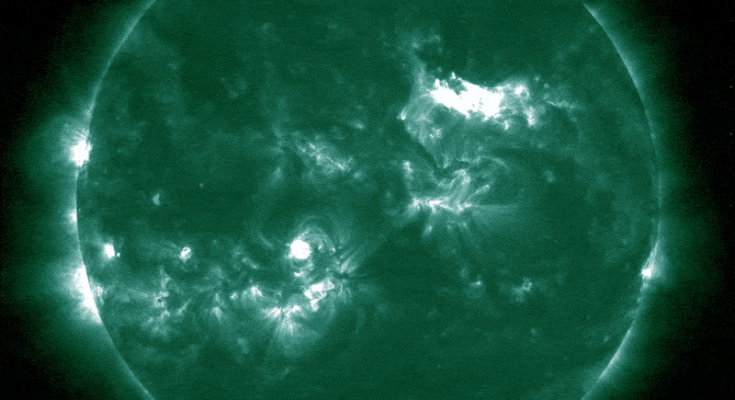A solar storm is heading towards Earth and could peak Wednesday night and early Thursday morning. This event could disrupt some radio communications and affect the positioning of satellites and power grids, the European Space Agency (ESA) and Spain’s Ministry of Science, Innovation and Universities reported today.
The ESA agency reports that an intense solar flare was observed on Tuesday with a peak around 11:04 Spanish peninsula time. Less than an hour later, a coronal mass ejection was detected with an initial velocity estimated at about 1,500 kilometers per second and with arrival at Earth expected Wednesday night or early Thursday morning, although these estimates include some degree of uncertainty.
The impact of the resulting geomagnetic storm is estimated to be “severe” and could affect satellites, power grids and navigation systems in the parts of the Earth exposed when the storm arrives, which would be Europe, Africa and Asia. The event does not pose a direct biological risk to people on Earth, ESA said in a statement.
“Our planet was hit last night by two consecutive coronal mass ejections that triggered a strong geomagnetic disturbance. We expect a third to arrive later today or tomorrow. The impact of this third CME will largely depend on whether it merges with the first two or not,” explains Juha-Pekka Luntama, head of ESA’s Space Meteorological Office, in a statement.
“The geomagnetic storm is estimated to continue at a severe level and may affect satellites, power grids and navigation systems. We have observed multiple CMEs ejected from the Sun, so intense space activity is expected to continue during the second half of this week.”
For its part, the Ministry of Science specified that last Tuesday’s flare was of class X5.1, “one of the most powerful in recent years”. This joined two other previous CMEs, generated on November 7 and 9, which reached Earth on the 11th.
The immediate effects were temporary disruptions of high-frequency radio communications in illuminated areas of the planet due to intense solar radiation, with disruptions noted, for example, in Africa.
Additionally, the flare released a shower of high-energy solar particles, giving rise to a radiation storm that continues to this day. While these particles do not pose a direct biological risk on the surface, they can affect satellites and electronic systems in space, the ministry says.
“Spain is not among the countries with the greatest direct exposure to this extreme episode of space weather. Our location in mid-latitudes, far from the polar regions, significantly reduces the intensity of the expected effects on the national territory. Consequently, no relevant damage or significant disruptions in Spanish critical infrastructure are expected as a result of these geomagnetic storms”, specifies the organization.
In general terms, the impacts in Spain will be mild, the Ministry assures. “Specific disturbances may occur in satellite navigation systems, with slight losses of accuracy in GPS and GNSS-based applications. It is also possible that very limited alterations may occur in shortwave or high-frequency radio communications. However, normal mobile phone networks, the Internet or FM radio should not show appreciable effects.”
As regards satellites operated by Spain or those that provide essential services to the country, such as telecommunications, meteorology or earth observation, no significant effects are expected. In some cases automatic security protocols may be activated or transient errors may be detected, without any real impact on service continuity.
Spain, through the Spanish Space Agency (ESA) in coordination with the European Space Agency (ESA), is carrying out detailed monitoring of the evolution of this storm to prevent any potentially critical situation or adverse consequence.



